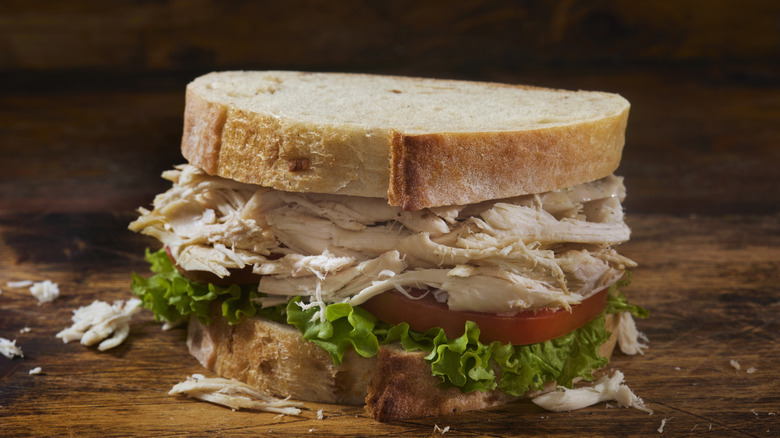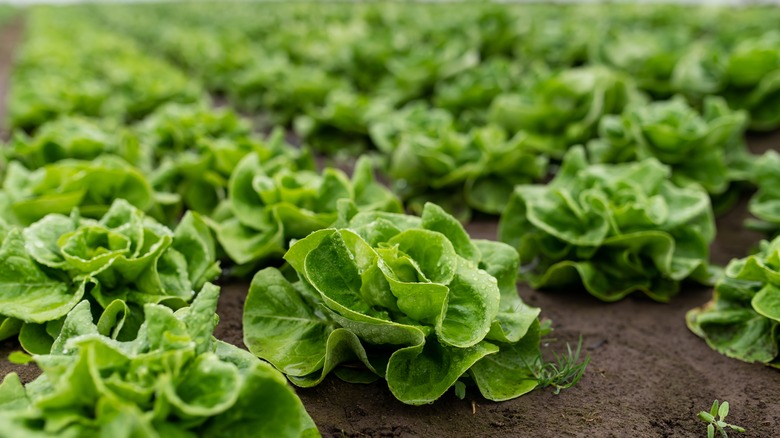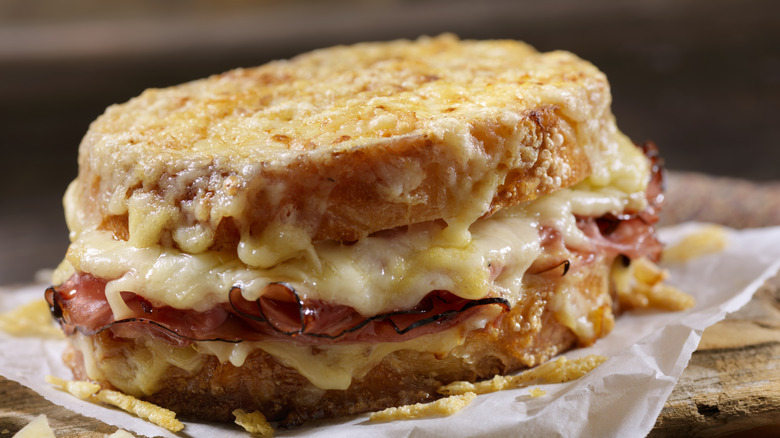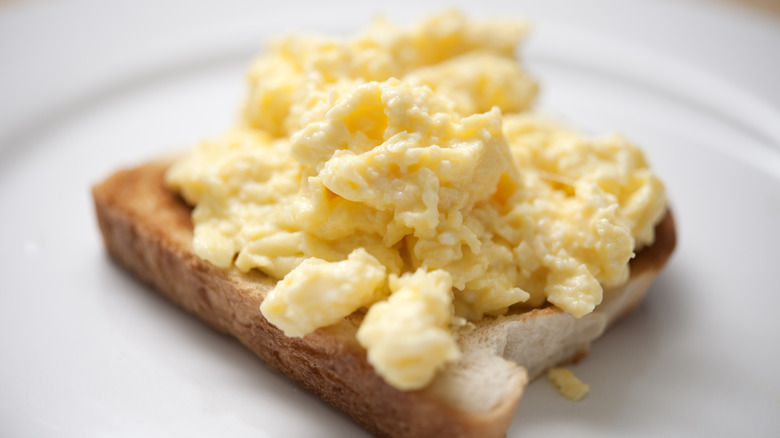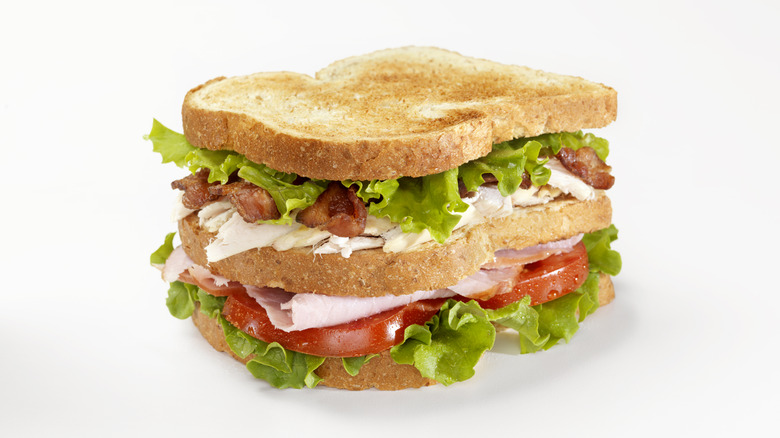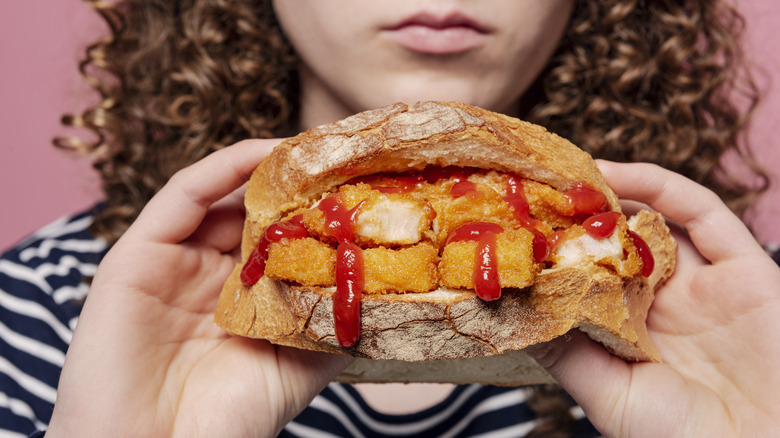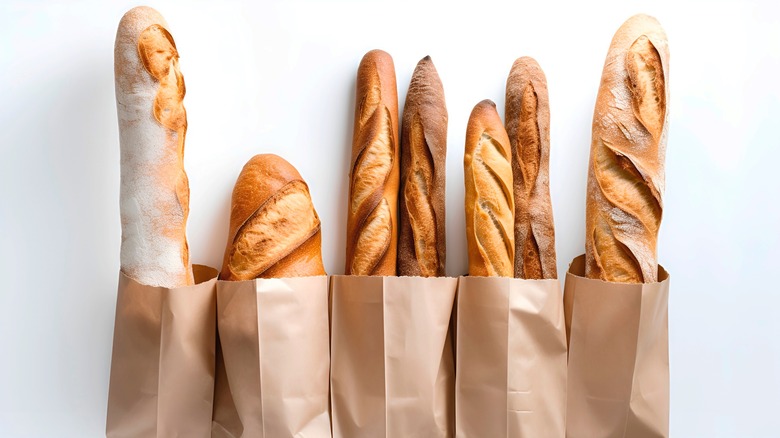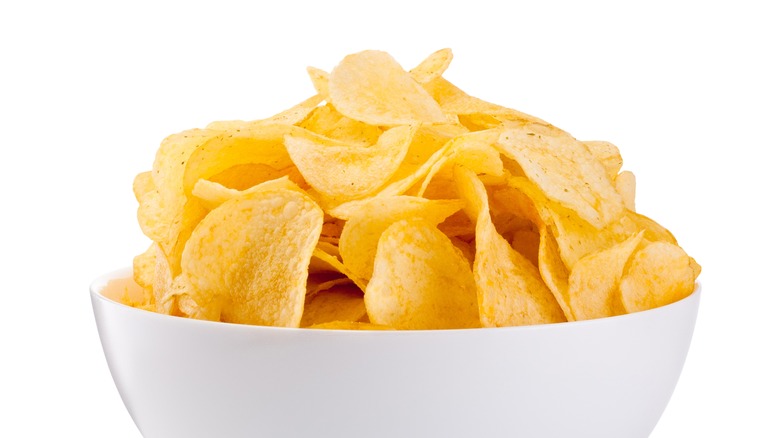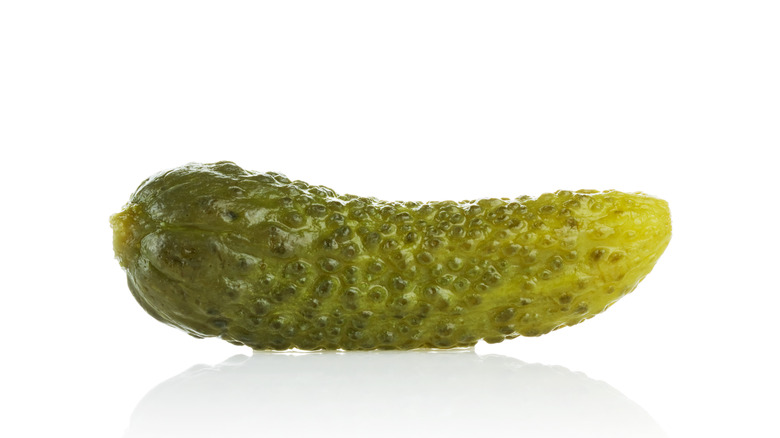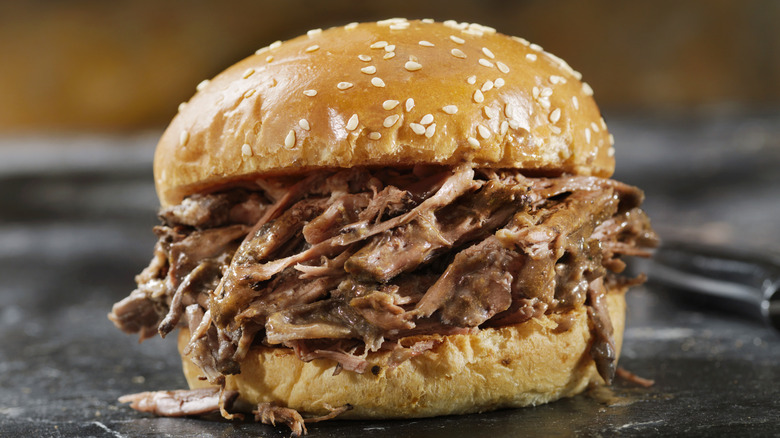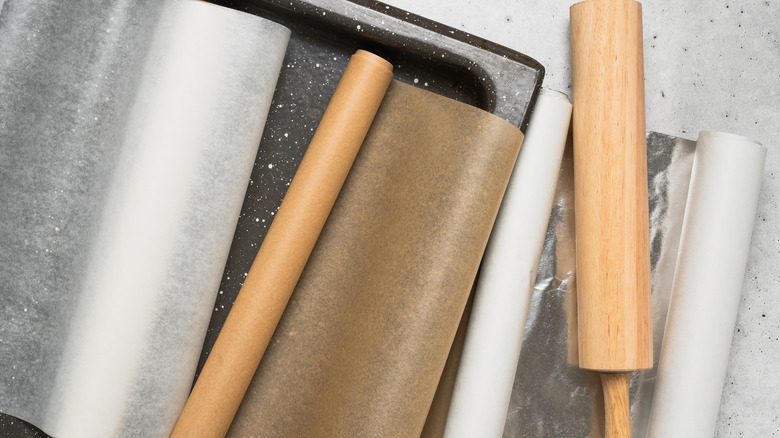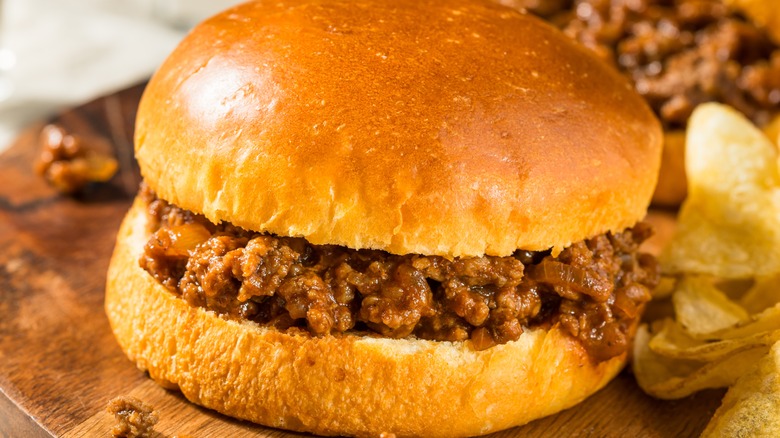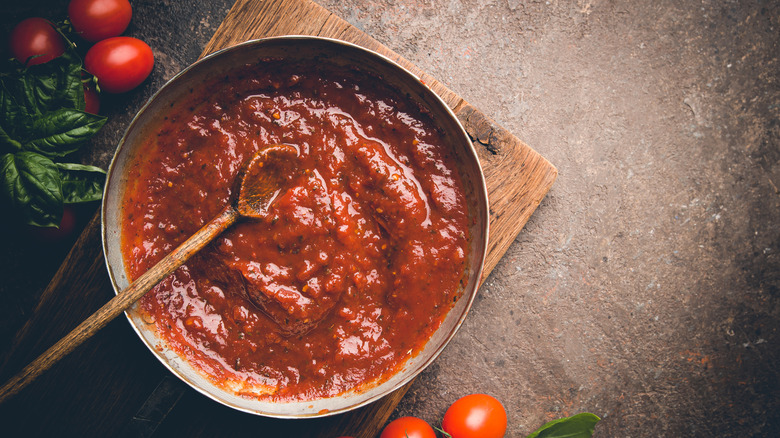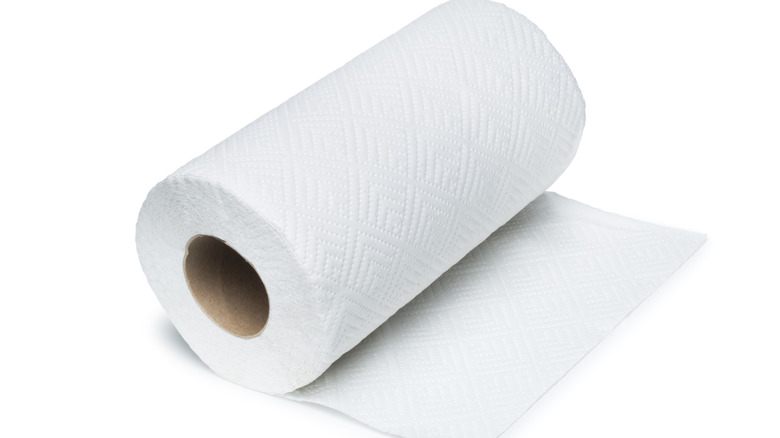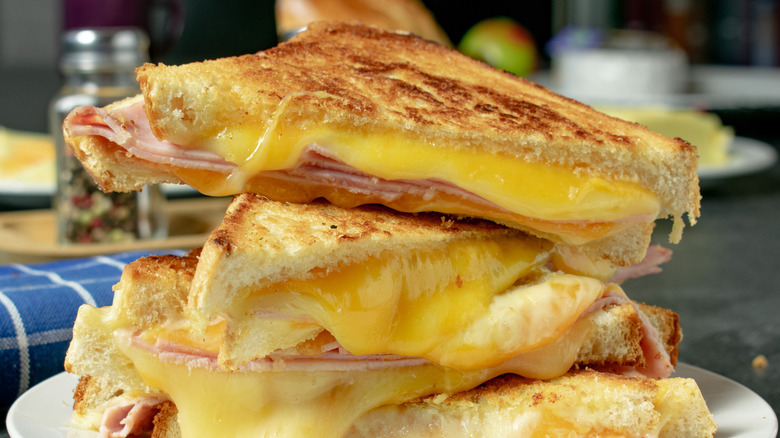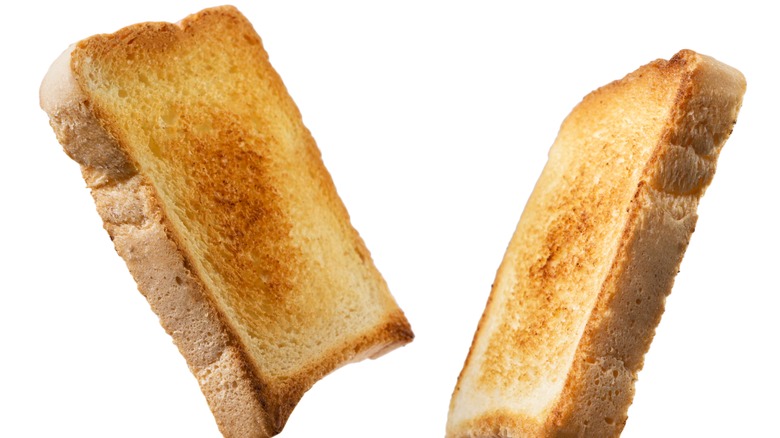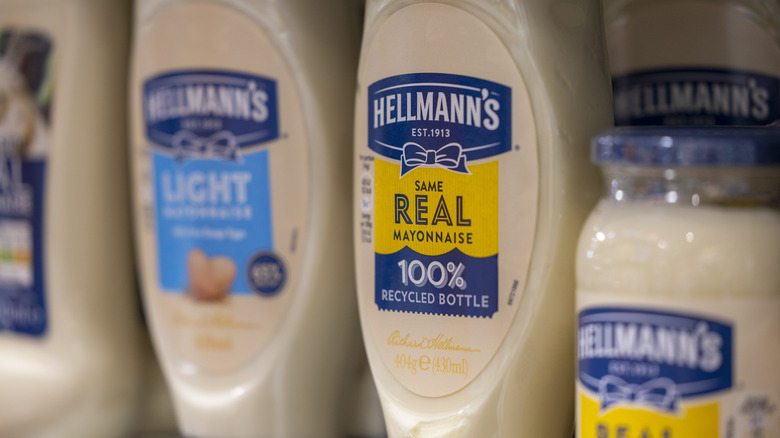17 Sandwich Hacks That'll Make Lunch Time Easier
Sandwiches are the epitome of culinary convenience and pleasure. With their versatile nature and endless combinations, sandwiches cater to every palate and dietary preference. Whether hastily assembled for a quick bite on the go or meticulously crafted as a gourmet delight, these handheld wonders can deliver intense flavors, interesting textures, and a filling, satisfying, complete meal.
One of the greatest pleasures of sandwiches lies in their simplicity. A marriage of bread and fillings, they require minimal effort yet deliver maximum satisfaction. Moreover, sandwiches are the ultimate convenience food. Perfect for busy mornings, office lunches, or impromptu picnics, they require no elaborate preparation or utensils, making them ideal for any occasion. But with that said, they can also toss simplicity to the wind and get as complicated and multifaceted as any fine dining dish. They can be turned from a mere repository for cold cuts to beds of iniquity for perfectly cooked brisket, fried chicken, or sophisticated vegetable preparations. In other words, a sandwich can be as easy or as complicated to make as you want it to be. But whichever style you go for, there are a few hacks you should know about before you get started. Let's take a look at them below.
Wrap your lettuce strategically
To make a complete meal out of a sandwich, the simplest thing to do is stick a few crisp leaves of lettuce in between the cheese and the mayonnaise, or whatever other ingredients you're using. As it turns out, this move can pull double duty, helping keep your sandwich from getting messy and falling apart.
The trick is to wrap the lettuce strategically around the side of the bottom slice of bread, making sure it folds over the edge halfway. Once the fillings are in, pull up the lettuce leaf until it covers them. Seal the deal with the top layer of bread. This adds some friction to the equation, keeping the more squirmy ingredients from squeezing out as soon as you take a bite. Meanwhile, that lettuce leaf will also protect your bread from the soggy effects of tomatoes or other watery ingredients. Just be sure to select a large, sturdy leaf that can handle the job.
Bake your sandwich for 10 minutes
One of the draws of making a sandwich for lunch is the ease of not having to cook anything. So if the idea of baking your sandwich for 10 minutes doesn't sound that appealing, we understand. But don't dismiss the notion out of hand. Putting something in the oven is a simple move that doesn't require extra steps or attention, so this hack might be just what you need to level up your sandwich in a simple, convenient way.
The hack involves assembling your sandwich and then putting it in the oven for 10 minutes while you read a magazine. Be sure to wrap it in foil so it doesn't burn or fall apart, and keep the temperature relatively low, around 250 degrees Fahrenheit. The result will be a guaranteed crispy sandwich with no dreaded soggy bread. You can also use this trick to reheat yesterday's sandwich, especially if it's been looking kind of sad and wilted.
Use eggs to turn a grilled cheese into a breakfast sandwich
Grilled cheese sandwiches are an American classic, and just like any classic, they have spawned countless spinoffs. One such spinoff is the grilled cheese breakfast sandwich that tastes just as good for lunch or brunch.
It doesn't have to be a breakfast sandwich at all, except for the fact that it contains scrambled eggs. Next time you go to make a grilled cheese, proceed as usual using your favorite type of cheese, such as Gruyère or cheddar, but also add some prepared scrambled eggs to the assembly, right between the cheese and the bread. Then proceed to heat it in your skillet, with plenty of butter brushed onto both sides of the sandwich. The fun part is that you can scramble your eggs with any of your favorite seasonings and condiments, ultimately making innumerable versions of this dish.
Layer it properly to keep it together
A simple sandwich with a single layer doesn't require a lot of acrobatics. Something short and flat is not likely to fall apart that easily. But when you start adding layers, things can get a little complicated, primarily in the form of slipping out of the sandwich and falling on your plate. Luckily, there's a hack for keeping your sandwich together through the tough spots.
This involves a careful layering technique of alternating slippery foods with grippy ones. For instance, mayo is a slippery food, so it should not be applied directly to another slippery food such as raw tomatoes. Rather, mayonnaise on bacon followed by the tomato can help you keep your sandwich intact. Likewise, if you plan on using pickles, be sure to put some sliced cheese in between them and your condiment, as long as it's a dry cheese with plenty of friction.
Avoid a messy sandwich by not overstuffing it
Not only can overstuffed sandwiches lead to an overwrought mouth feel, but they can also fall apart more easily, with ingredients flying every which way once you take that first bite. Unless you have an unusually large jaw capacity, you might want to avoid overstuffing your next sandwich.
A sandwich with fewer fillings doesn't mean a less flavorful one. If the pastrami isn't that good, 50 layers of meat aren't going to make the sandwich any better. Rather, focus on thinner accouterments. A tasty homemade sauce can change the game entirely, like adding a fresh and zesty green goddess sauce to a vegetable sandwich or making sure you haven't forgotten to put mustard in your Cuban sandwich. As with any other meal, it's the quality of the ingredients you put in your sandwich that matters, not the quantity.
Keep ingredients together by choosing the right bread
It often seems like runaway ingredients in sandwiches are caused by improper layering or some other problem with the filling, but sometimes the bread is the one to blame. More specifically, floppy, thin, or limp bread cannot keep a sandwich together, no matter what you put it in.
The solution is to pay close attention to the type of bread you use. Something stiff, strong, and powerful that can stand up to the wiliest ingredients, including those pesky, slippery tomato slices. Just try to place a fresh tomato slice directly on a rough piece of sourdough and you'll see. Other great options for sturdy bread include French baguettes and ciabatta, both of which are hearty and dense and won't bend easily when you pick them up. The bread to avoid is usually pre-sliced bread from a package. Rather, opt for something freshly baked with a nice crust.
Add texture with crunch
Sandwiches tend to stick together best when all the ingredients join to bond and blend between two slices of bread. This usually requires that they have similar shapes and sizes, which is why we slice the cheese and tomatoes to fit in with the cold cuts and lettuce, for instance. Indeed, you don't often see small, crunchy little bits in sandwiches, as they would likely fall out.
One notable exception is the humble potato chip. Although crispy chips won't mimic the behavior of the meat or cheese in your sandwich, if you can manage to squish your two pieces of bread tightly enough, they shouldn't fall out when you pick up your sandwich. Meanwhile, their presence will give the sandwich a fun crunchy texture and an added savory flavor. You can achieve a similar effect with fresh cucumber or other fresh and crispy vegetables. Meanwhile, if you're making a hot sandwich like a Reuben, where crispy carrots might feel out of place, you can add crunch by properly toasting the bread.
Balance your flavors with acidity
The success of any dish is based largely on its balance of flavors, whether it's a simple creation or a sophisticated culinary feat. For celebrity chef Tom Colicchio of "Top Chef," this also applies to sandwiches, which he believes should include a touch of acid to balance out whatever heavy ingredients you might have put in there. He mentions vinegar or spicy peppers as worthy inclusions, but you can think up your own.
Indeed, plenty of ideal sandwich ingredients contain a good amount of acidity. Squeezing lemon juice on a chicken sandwich before closing it up could do the trick. Or you could slice up some pickles and nestle them between the bread and the mortadella. A whole range of pickled vegetables are at your service in this department. Or you could take a page from the tried and true book of fish and chips and splash some white vinegar on your fish sandwich.
Cook your sandwich meat longer
Not all sandwich meat can or should be cooked. Putting a nice prosciutto or jamon Iberico through the heating process would be a tragedy. But when you choose a type of sandwich meat that can be cooked, make sure you go whole hog, pun intended, especially if you're working with thicker cuts.
The key is to prepare a sandwich meat that is tender, tasty, and doesn't leave your jaw glued shut from chewiness. To achieve this effect, it is recommended that you cook your meat for longer than you might have thought, or until it becomes soft and tender. For instance, when making a roast beef sandwich, pulling the meat out of the oven too soon will require a thinner slice of meat, or you might have a hefty lump to chow down on. If thin slices are your thing, then by all means. But a thick cut of pastrami that doesn't fall apart in your mouth could be a problem.
Wrap it in waxed paper
If you're planning on making your sandwich ahead of time and transporting it somewhere, you will need a receptacle to carry it. You can't just shove a naked sandwich in your purse. And while many people tend to go for plastic wrap, we suggest a different kitchen wrapping staple.
If you want to make sure your sandwich stays together until lunchtime and doesn't go soggy, waxed paper is the way to go. Flimsy plastic wrap is simply not strong enough to keep a strong sandwich contained, while its composition tends to lock in moisture, which leads to soggy bread. Waxed paper won't cause these types of problems. Wrap the paper snugly around the sandwich, or all bets are off. This way, the sandwich will not be exposed to too much air, while the paper will let in just enough so that moisture doesn't start to gather.
Combine sirloin and chuck for sloppy Joes
Food publications, including this one, give a lot of space to discussions on which meat blends to use for burgers, but not much is dedicated to the proper creation of a sloppy Joe. That changes today. The trick is to use not one, but two different cuts of beef, namely ground sirloin and chuck, in equal parts.
Although it's hard to make a bad sloppy Joe, this meat mixture will provide the ideal balance between flavor and moisture levels. That's because the leaner sirloin can dry out too fast during cooking, but provides an excellent flavor, while the chuck's high fat content can provide enough moisture, as the fat melts, to pick up the slack. That moisture is what ultimately provides the slop in the sloppy Joes, and you can't make this meal without it.
Barbecue the shrimp in your po'boys
Po'boys are a beloved sandwich invented in New Orleans, and shrimp are a common ingredient in their creation. In many cases, this is fried shrimp, but you can also make po'boys with shrimp barbecued in butter, garlic, and a delicious blend of Cajun seasonings, which is also a New Orleans invention.
Start by keeping your shrimp whole, for easier barbecuing — you'll shell them after cooking. Next, decide whether you want your shrimp to be saucy or dry. The traditional way to make this dish is with plenty of sauce, but if you're worried the shrimp will end up too wet to put in a sandwich, you can keep things dry by using more spice rub and fewer liquid ingredients like Worcestershire sauce. The texture may differ based on your choice, but the flavor will remain strong and tasty.
Use pantry staples to amp up a sloppy Joe
While the choice of meat is fundamental in a sloppy Joe, the accompaniments can be just as important. Luckily, if your pantry is decently stocked, you should have everything you need to make an exceptional sloppy Joe. First of all, you'll need pantry staples to make the basic sauce, which is primarily composed of ketchup, mustard, and Worcestershire sauce.
But you may also want to continue your search through the pantry until you reach the salsa section, as this simple ingredient can transform a typical sloppy Joe into an exceptional one. While you can certainly add salsa to the traditional recipe, we like the idea of swapping it in for ketchup to remove the excess sugars that can be too sweet for certain palates. You'll end up with a more balanced sloppy Joe comprised of fewer sugars and slightly more acid.
Store it with a paper towel
If your sandwich is too big to finish in one go, don't force yourself to eat it entirely to avoid food waste. While it's true that sandwiches can get soggy and unpalatable when kept in the fridge for later, we have a trick that can remove those worries and allow you to store leftover sandwiches without ruining them.
Simply wrap the remainder of your sandwich, or even a fresh one, in some paper towel before placing it in an airtight container. That paper towel may look redundant, but it serves to soak up any moisture that may accumulate as the ingredients in your sandwich start to break down, especially the ones that are already wet, like tomatoes or lettuce. The towel takes in the moisture so the bread doesn't have to and remains firm and crisp instead. Add extra towels and some tin foil for added protection.
Beware of warm ingredients
The sandwich, one of the most versatile meals on the planet, can be served hot or cold. A cold version might involve nothing more than some cheese and cold cuts, while a hot version would involve a fried, baked, or otherwise cooked protein. These are both great options and it would be silly to compare apples and oranges in most cases.
But one thing you need to be aware of when it comes to sandwiches with hot ingredients is that they're more vulnerable to sogginess than their cold counterparts. The hot ingredients can quickly turn a crisp slice of bread into a sad, wet blanket. This is because the hot steam coming off them quickly seeps into even the sturdiest breads. The solution is to let these ingredients cool down a bit before you place them in your sandwich. You can still enjoy them warm, but not so hot that the heat will affect the integrity of the bread.
Toast one side to combat sogginess
Sogginess is a typical sandwich-storing problem that may require different solutions in different situations. One trick that may come in handy is the toasting method, whereby you toast one side of the bottom and top pieces of bread. Don't have a magical toaster that only does one side at a time? Just put your slice of bread in a skillet and cook it on only one side at medium heat. Be sure to select a nonstick pan, or you may have to add some cooking oil, which will necessarily get on your bread.
Only once this is done can you start building your sandwich. Be sure to keep the toasted side turned inwards, towards the filling, as the drier side is the one that will keep all the condiments and juices from penetrating the bread and turning it soggy.
Protect your bread with mayonnaise
Although it might seem counterintuitive to use mayo to keep your sandwich bread from getting soggy, its thick layer of fat can act as a shield, protecting your bread from the sogginess that inherently occurs when it absorbs the water contained in tomatoes, onions, and other typical sandwich elements.
If you've ever tried to mix oil with water, you'll understand how this works. The oils contained in the mayonnaise will naturally repel the water that has made its way towards the bread, keeping the sandwich dry. So to ensure this trick will work in full, you'll have to slather mayo on the interior of both pieces of bread. This shouldn't be too much of a sacrifice though. Mayonnaise is a great sandwich staple, both for its savory taste and creamy texture. But if you're not a fan of mayonnaise, that's okay, too. Other fatty elements, like butter, will behave the same way.
